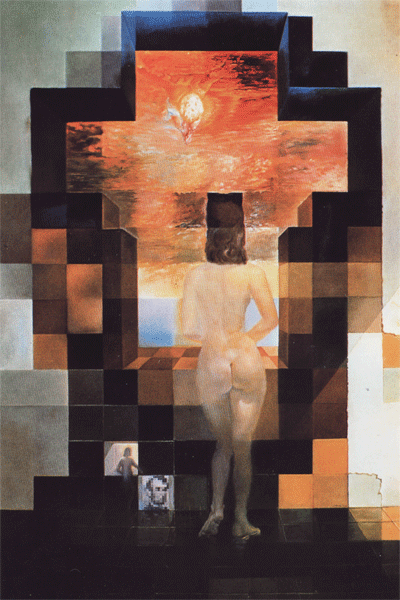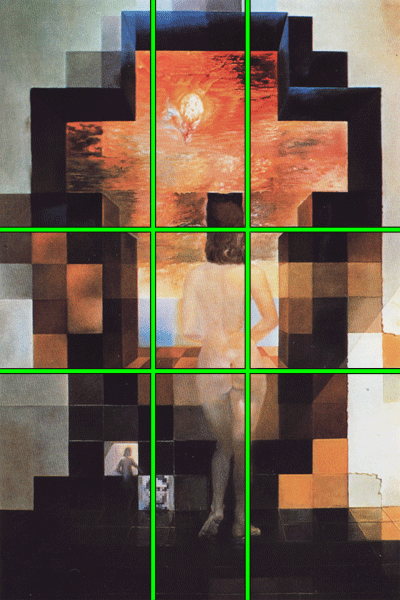Home Page » Post
« Next Article: Pedro Almodóvar's films to be "treated" by Californian Psychologists
» Previous Article: Nadal supports responsible drinking campaign
Friday, March 25, 2011 (read 20715 times)
Salvador Dalí Painting: His wife or Abraham Lincoln?
by KimberlyFamous Spanish painter Salvador Dalí was fascinated with math, optical illusions and many other things that he aptly incorporated into his paintings. He was a genius, constantly surprising people with works that may seem to have come from a madman but incorporated advanced concepts and complex principles.

Take for example, the painting of his wife, Gala, looking out of the window. The painting was done in 1976 and is called “Gala Contemplating the Mediterranean Sea”. This curious painting, up close appears to be just that, Gala looking out the window, but from a distance appears to be none other than the famous ex-American president Abraham Lincoln. This same effect nowadays can be reproduced by simply blurring the image by placing a filter to remove high frequencies (details).
How did he do this before the time of computers and Photoshop? I mean, we are talking about something similar to the photo-mosaics that are so popular today, a picture made of many individual photographs that are shrunk and arranged together to create a different image. Not only was he able to reproduce this effect, but he also did it while following the traditional elements of painting a composition (focus, composition and design, palette, value, mass, texture, symbolism, macro/micro, ornament, juxtaposition, stylization, character, tension (in the frequencies), line, vignette and perspective).
Salvador Dalí had been inspired by a couple of researchers who had published an interesting article about spatial frequency, human vision and face recognition. They used a picture of Lincoln as an example against a 16x16 grid in order to show the importance that low frequencies have in our ability to understand and recognize faces.
Dali decided to apply the grid theory to his painting. He understood that if he were able to apply the right overall brightness value to each cell of the grid, then from a distance we would see Lincoln. Once he had determined the proper brightness of each cell, he added high frequency detail within them, without changing the overall brightness of the section.
How this works is complicated and has to do with the fact that our retinas and optic nerves have two subsystems: one is better at processing high spatial frequencies and color while the other is better at processing low spatial frequencies, form and depth.
optic nerves have two subsystems: one is better at processing high spatial frequencies and color while the other is better at processing low spatial frequencies, form and depth.
A painting is complicated and has brightness changes going on at different rates throughout the picture. But a completed picture consists of both high frequency changes (changes in brightness over small distances) and low frequency changes (changes in brightness over great distances).
Usually these frequencies work together, but in Dali´s painting they don’t match. When this happens, and there is a visual conflict, the high frequency information wins when you are up close, hiding the underlying picture. The fine detail that we see up close is high frequency because the brightness changes quickly with lines and edges. As you step back, you cannot make out that detail and all you see are the remaining low frequencies, thus revealing the hidden picture.
And, just in case we did not notice his amazing feat, Salvador Dalí included a picture of Abraham Lincoln within the painting.

Other interesting details:
- "A" The glare on Lincoln’s forhead is St. John of the Cross (Another famous painting by Dali)
- "B" Gala’s head, along with the block of dark colors seen around it, form Lincoln’s eye and nose area.
- "C" This dark area is known as “Negative Space” and is used to define the outside of the face and beard.
Salavador Dali, as always, a fascinating Spanish artist!
Keywords:
Comments
An artwork filled with powerful meanings about the woman''s body and the liberty Lincoln engineered for a whole race of human beings. I own a print and it is among my favorite.
